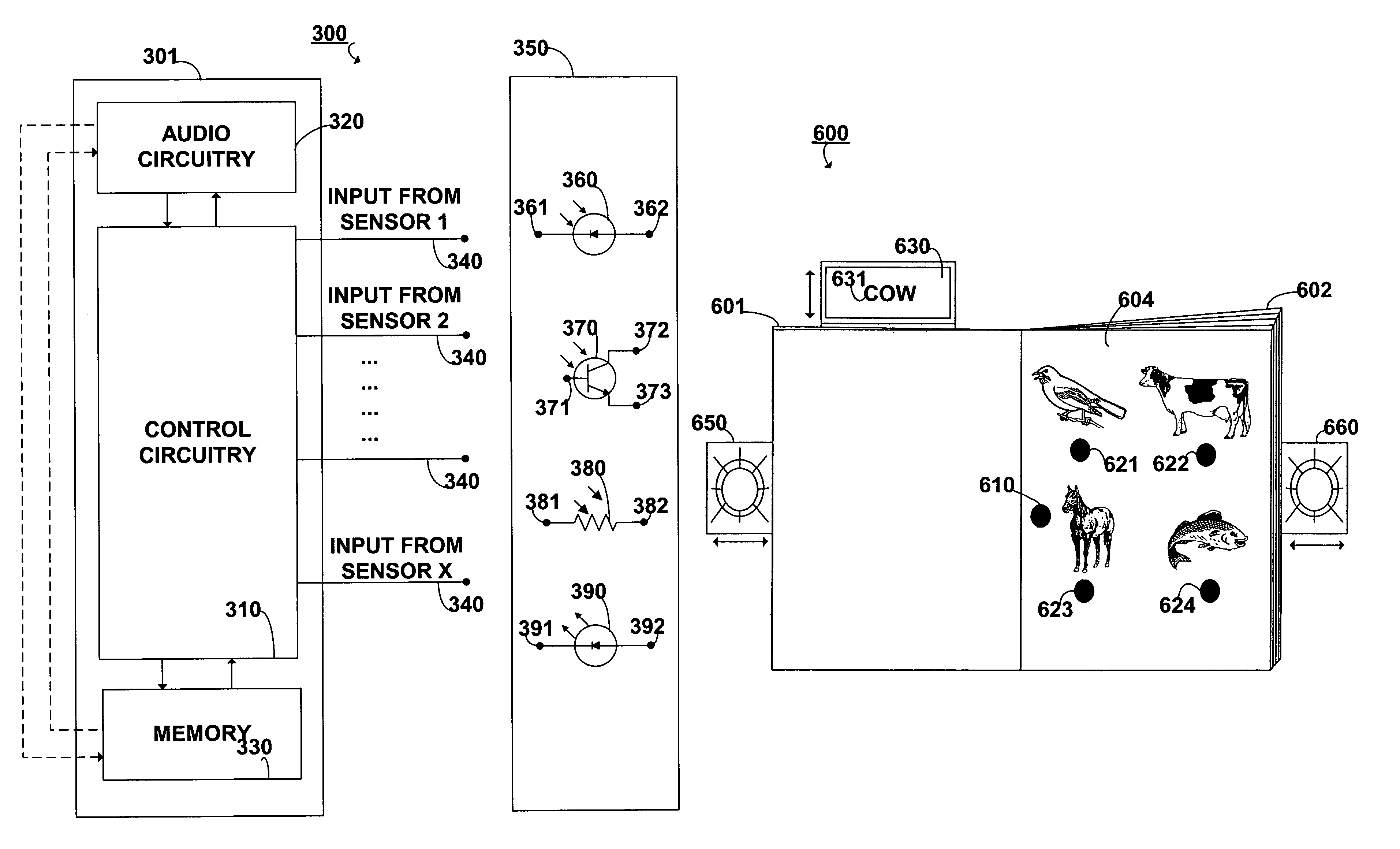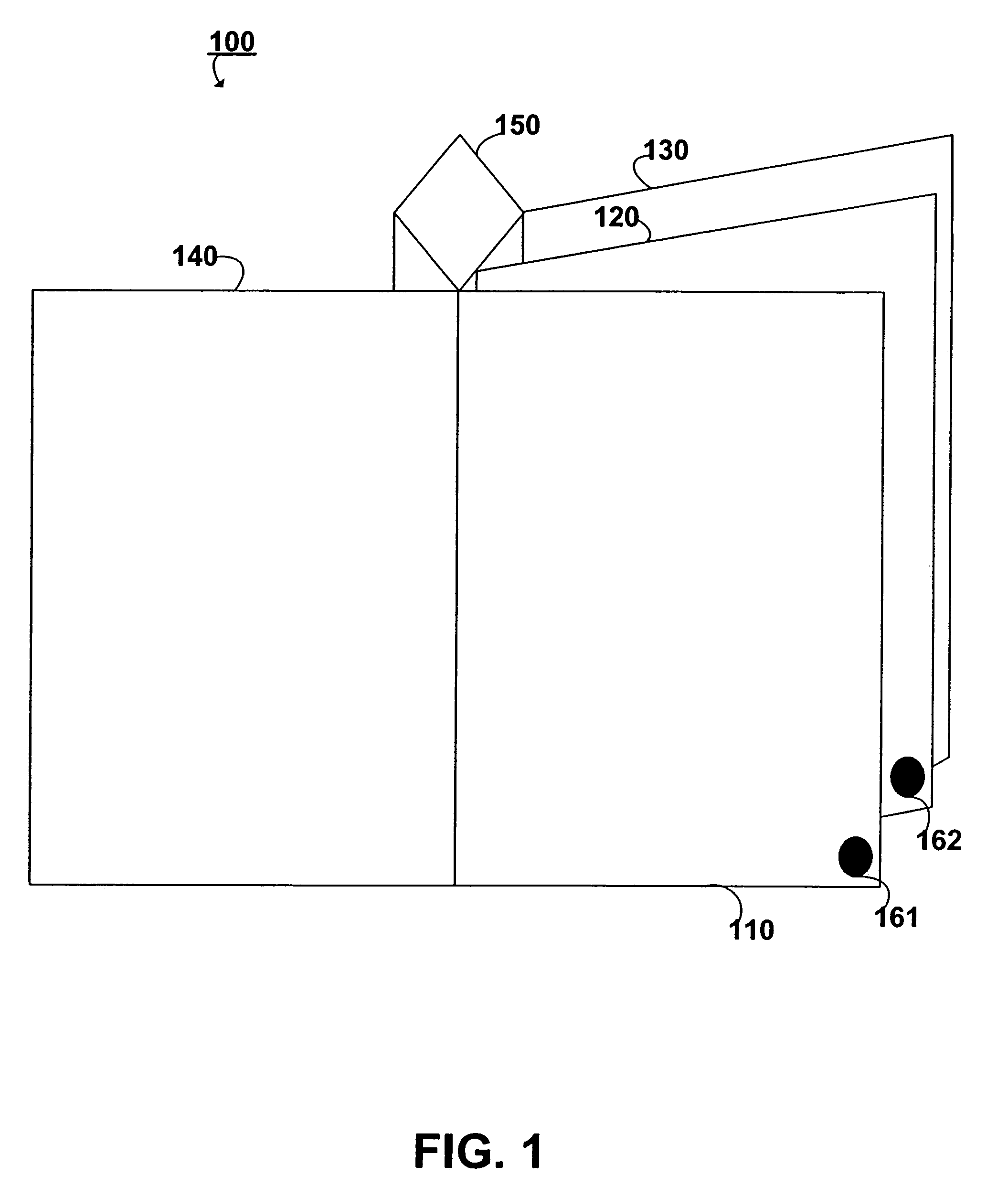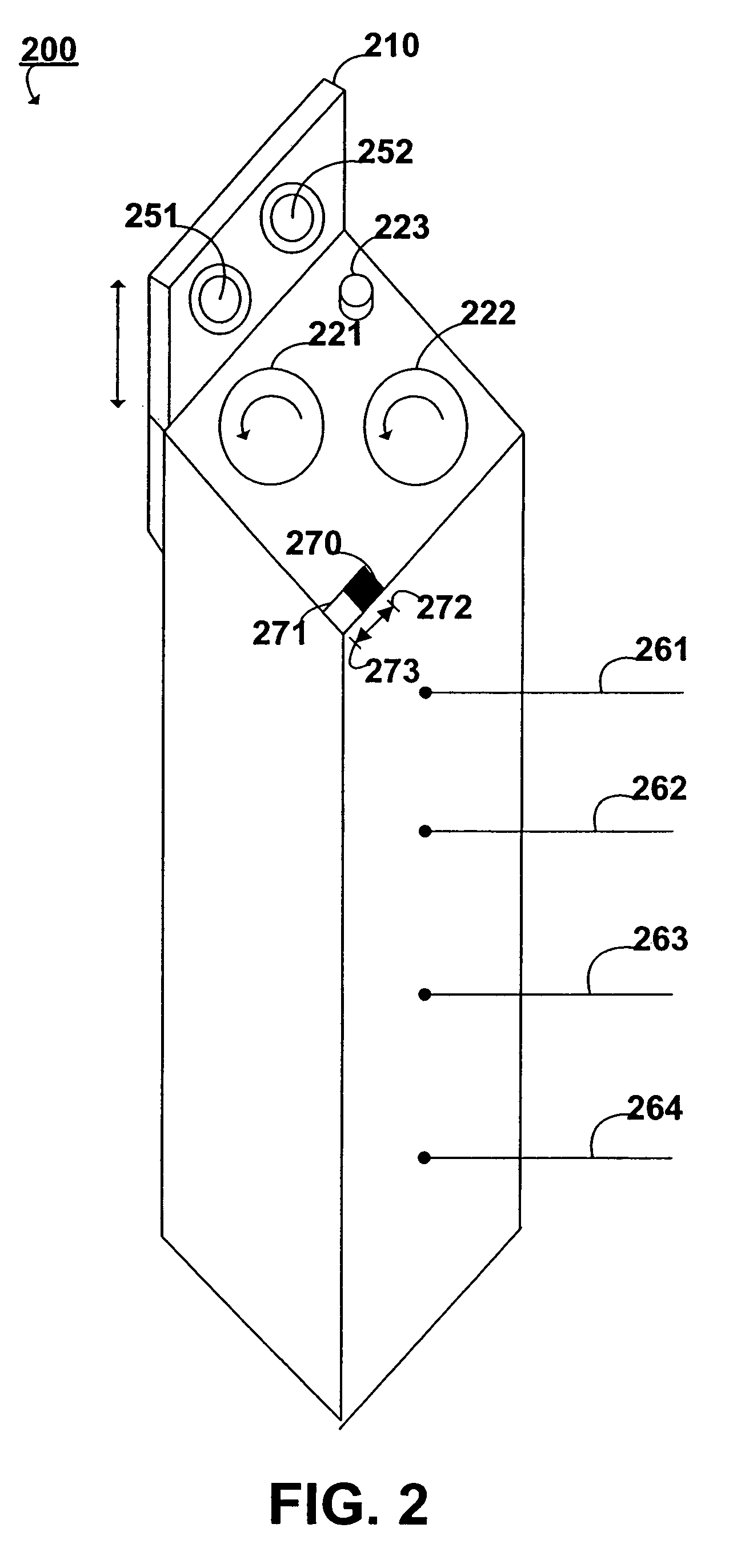Talking book employing photoelectronics for autonomous page recognition
a technology of photoelectronics and talking books, applied in the field of talking books employing photoelectronics for autonomous page recognition, can solve the problems of limiting the number of pages that can be efficiently realized, the complexity of the book's design, and the deficiency of prior art mechanical talking books, so as to relieve one of the burdens of cookbook users, and the effect of increasing the whimsical and festive natur
- Summary
- Abstract
- Description
- Claims
- Application Information
AI Technical Summary
Benefits of technology
Problems solved by technology
Method used
Image
Examples
Embodiment Construction
[0030]FIG. 1 depicts talking book 100 that employs any number of light sensors 161 and 162 on any number of pages (e.g., pages 110 and 120) to determine which page, or pair of pages, is being read by a user. Persons skilled in the art will appreciate that any type of light sensing or light sensitive component or material may be used to sense the amount of light that is exposed to the pages of talking book 100. Light sensors 161 and 162 may be, for example, photodiodes, photoresistors, phototransistors, solar cells, photomultiplier tubes, or any other type of light sensor.
[0031]In preferred embodiments, talking book 100 recognizes what page is opened to (e.g, what page is being read by a user) by sensing what page is exposed to the most amount of light. Talking book 100 may also be configured to recognize an OPEN page by determining which page or pages are receiving any light past a particular threshold. After the particular page, or pair of pages, is recognized as being OPEN, talkin...
PUM
 Login to View More
Login to View More Abstract
Description
Claims
Application Information
 Login to View More
Login to View More - R&D
- Intellectual Property
- Life Sciences
- Materials
- Tech Scout
- Unparalleled Data Quality
- Higher Quality Content
- 60% Fewer Hallucinations
Browse by: Latest US Patents, China's latest patents, Technical Efficacy Thesaurus, Application Domain, Technology Topic, Popular Technical Reports.
© 2025 PatSnap. All rights reserved.Legal|Privacy policy|Modern Slavery Act Transparency Statement|Sitemap|About US| Contact US: help@patsnap.com



